When deciding what surface to project onto, I decided to take a look at some existing companies that offer projection mapping services to see what type of screens they usual map onto. Although projection mapping is versatile and can be applied to almost any surface, I wanted to find out if companies offered screen hire or rental and what these screens tended to be made from. After a quick google search I came across Event Projection, a leading London based technical production company, that offers bespoke projection displays for businesses, venues and public events. From browsing their website, I was see the types of packages and services offered to clients and get a idea of the various equipment used and the average cost.
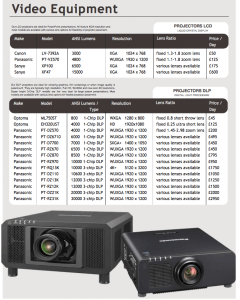

Depending on the project scale and how powerful a projector is needed, prices start at £45 a day for a Optoma ML750ST with a resolution of 1280 x 800. Moreover, if I was not creating a window display and was opting to source a screen, this would cost me an additional £25 a day for a 6′ x 4’6” pull up.
Fortunately for me, I have full access to a standard Canon Realis X600 projector with a resolution of 1024 x 769, free of charge from the university’s Media Loans. However, if I was creating a project like mine and was not a student here at the university, then I would have no choice but to hire one like the Optoma ML750ST for £45 a day. Of course, I would look to see if there are cheaper alternatives first.
Furthermore, as mentioned in my proposal, when researching into existing examples of projects similar to mine, I came across this video on Youtube of a Christmas projected window display. What I found most interesting about it, was that the person who created the display used shower curtain for the surface to project onto. Never would I have thought of using something so simple and inexpensive, yet as demonstrated in this clip, it serves it’s purpose very well. With this project, the projector has been placed on the outside of the property and is projecting inside to create a Christmas themed window view. My project will work on the same principle, the only difference being that I will be projecting from the inside outwards for passersby to see.
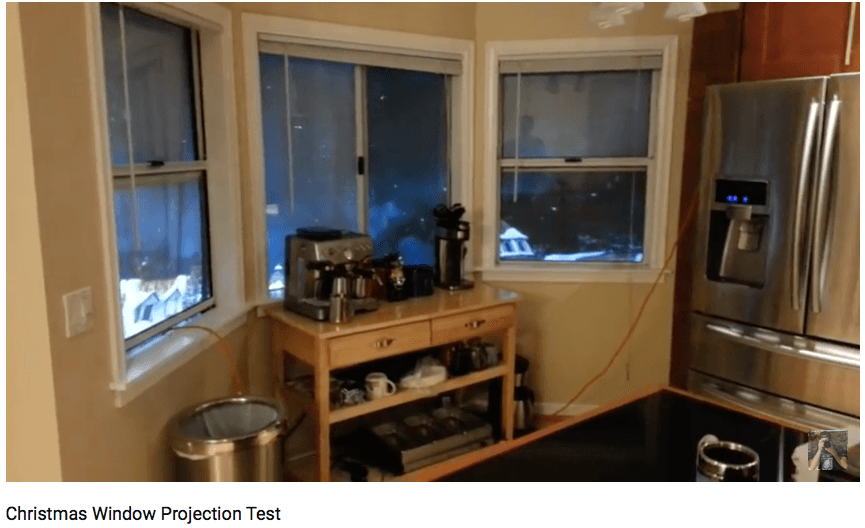 In preparation for my project, I decided to compose a series of short tests using three different surfaces, to see which one works best at projecting a clear image.
In preparation for my project, I decided to compose a series of short tests using three different surfaces, to see which one works best at projecting a clear image.
Test 1: Shower Curtain
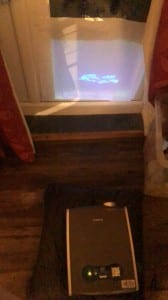
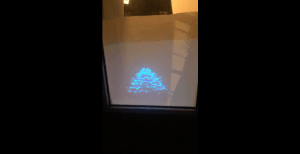
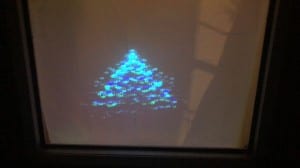
For the purpose of a quick experimentation test, I placed the projector onto a small cushion and positioned it to project my exported Trapcode Christmas tree. As you can see from the photographs and short video, the shower curtain which I purchased for just £3 worked exceptionally well. The only slight problem that I did find, was that compared to the other two materials, the shower curtain was a lot more difficult to stick and secure. Moreover, the material creased fairy easily which was noticeable on the final image Nonetheless, for someone working with a small budget, the shower curtain is definitely a good option to consider.
Test 2: Baking Paper
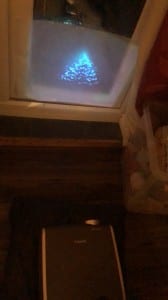
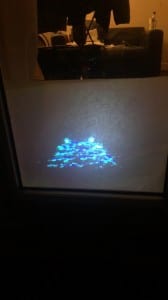
After chatting to the Lincoln Light’s event organiser, Simon Fitch, I was informed that many projection displays from previous years used baking paper as the base surface material. Much like the shower curtain, again, I would never have thought to use something so simple. After measuring the size of the window I will be projecting onto, I worked out that I would only need to buy two boxes of baking paper for just £2.
Furthermore, I found that the baking paper was a lot easier to stick down and did not crease as easily as the shower curtain. Out of all three materials, I found the baking paper to be my favourite and will most likely be using this for my final project.
Test 3: Coloured Plastic Sheet
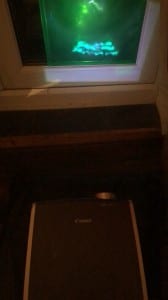
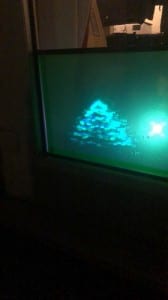
For my final test, I wanted to experiment with tinted plastic sheets to see whether or not the colour would affect the image. As you can see from the photographs, compared to the shower curtain and baking paper, the plastic sheets were just a little too transparent, causing the projector to beam brightly through and cover the image. Although the tinted plastic did look very festive and visually interesting, it did not work as well as the other materials for retaining image clarity.
Conclusion:
Rating out of 5
Shower Curtain: 4/5
Baking Paper: 5/5
Tinted Plastic Sheet: 2/5
For my window display I will most likely go with the baking paper, as I found it the easiest to secure into place and the clearest quality transferred image.
Bibliography
Event Projection (2017) Rate Card 2017. London: Event Projection. Available from http://eventprojection.co.uk/wp-content/uploads/2017/04/Event-Projection-Rate-Card-2017.pdf [Accessed 8th November 2017]
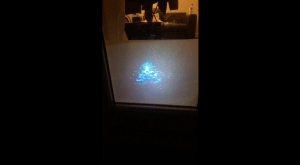
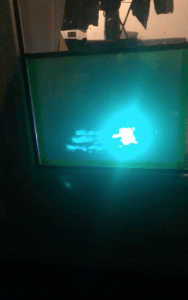
Leave a comment